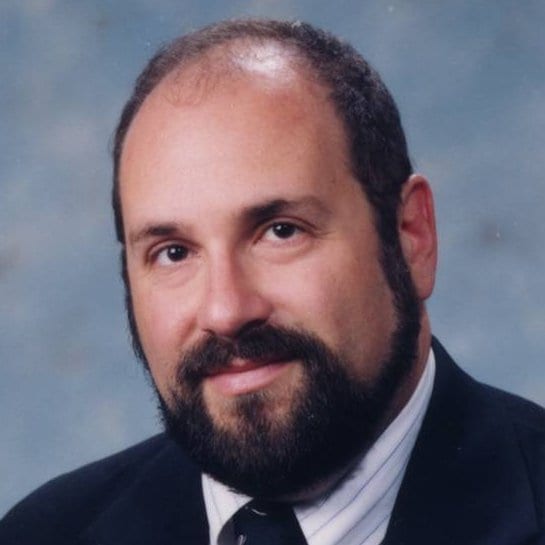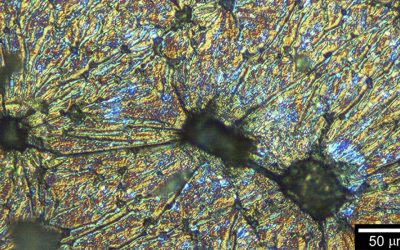 Professor Michael Silverstein, of the department of Materials Engineering and Chairman of the Interdepartmental Program in Polymer Engineering at the Technion – Israel Institute of Technology, has shared his thoughts on his research into polymers; his past achievements, where the field is going, and his newly published book, entitled Porous Polymers.
Professor Michael Silverstein, of the department of Materials Engineering and Chairman of the Interdepartmental Program in Polymer Engineering at the Technion – Israel Institute of Technology, has shared his thoughts on his research into polymers; his past achievements, where the field is going, and his newly published book, entitled Porous Polymers.
What attracted you to science and how did you get to where you are now?
I was always trying to understand the way things worked, trying to probe the underlying mechanisms and the logic behind them. One important step in getting to where I am now was learning to choose research questions that would lead to interesting answers.
Were there any strong childhood influences that lead you to this career? How did you view science and scientists as a child?
When I was four years old my parents bought a “Singing Science” record. The songs posed interesting questions about the world around us and provided scientific answers. As I grew up, the burgeoning science fiction culture described incredible innovations that could potentially be generated by scientific advancement. My Mattel Thingmaker with Plastigoop stimulated my interest in polymeric materials.
What (or who) have been your biggest influences or motivation?
There are five Professors who have helped mold my career path: Raymond Woodhams (University of Toronto); Moshe Narkis and Arnon Siegmann (Technion – Israel Institute of Technology); and Eric Baer and Anne Hiltner (Case Western Reserve University). Their collective influence on the way I approach scientific issues continues to this very day.
What would you have done if you had not taken this career path? What motivated you to choose a career in academia instead of industry?
I already had this career path in mind during my final year of high school, so I never really considered anything else. I instinctively felt that a combination of research and teaching would provide an important balance. The validity of this idea proved itself again and again.
 What got you interested in polymers as a subject, and how did you develop your current research interests?
What got you interested in polymers as a subject, and how did you develop your current research interests?
My academic interest in polymers started with Prof. Raymond Woodhams during my early undergraduate years. I took every polymer-related course I could find and worked for two summers in the polyurethane foam industry. My PhD research with Prof. Moshe Narkis focused on emulsion polymerized interpenetrating polymer networks. The wide scope of my current research on emulsion-templated porous polymers allows me to combine many different topics that are of interest to me.
How does this work fit into a wider scientific / general context?
Porosity is widespread in natural materials (sponge, coral, plants, eggshells, and bone) and the scientific community is endeavoring to understand the relationships between Nature’s adoption of a cellular structure and the desired functionality. Porosity is also an integral part of many common industrial applications (separation membranes, catalysis, ion exchange, and chromatography), advanced technological applications (low k dielectrics), and biomedical applications (implants, tissue engineering, drug delivery). My work involves developing novel porous polymer systems with unique properties using innovative synthesis routes that may be relevant for such applications. I view my part in the “greater scheme of things” as “dreaming up” new concepts for such materials, establishing their feasibility and validating their significance through research and development in my laboratory, discovering the scientific and engineering principles involved, and transferring the resulting systems to an industrial setting for further development.
What influence do you believe your work will have?
There are many different aspects to my work including advancements in science and engineering through research and development, training graduate students, and enhancing scientific understanding, interaction, and collaboration by organizing “Porous Polymer” conferences and by editing the “Porous Polymers” book. My research has been adopted by industry and has inspired others to carry on where I left off, my graduate students have gone on to have successful academic and industrial careers, and I believe that the “Porous Polymers” book and conferences have proved valuable resources for the scientific community.
What do you enjoy most about your work?
There are two aspects of my work that I really enjoy. First, the “Eureka” moments, discoveries that can range from complete surprises to finding that the last piece of the puzzle fits exactly where you expected it to fit. Second, seeing graduate students transformed into knowledgeable, skilled, independent, and enthusiastic researchers.
Which of your publications are you most proud of? Which is your favorite piece of your own research?
Somehow, I always feel that the papers that I published most recently eclipse my previous work. I am presently working on two very different manuscripts which describe truly extraordinary porous polymers with unique properties. I am really, really excited by these materials, but it will be a few months before I am willing to say any more. Needless to say, I am very, very proud of the “Porous Polymers” book, an outstanding cooperative effort by so many good and talented people.
What is the most exciting research paper that you have read recently?
That is a tough question! There is so much exciting work going on. It’s like asking me which of my children I love the most.
What are your short and long term plans?
I just had 3 wonderful PhD students graduate. I am now looking for students who would replace them and begin to explore new research directions. In the long term, there are 3 great “Porous Polymer” conference symposia coming up, EUPOC-2012 (June 3 to 7, Gargnano, Italy), Macro-2012 (June 24 to 29, Blacksburg, VA), ACS National Meeting, Spring 2013 (April 7 to 11, New Orleans LA).
What are some of your professional challenges?
The computer and communication revolutions have provided far more advantages than disadvantages, but the disadvantages can still create great challenges. These challenges include the low signal to noise ratio in the flood of scientific information, the overwhelming demand for an immediate response from everyone about everything, and the widespread use of style to disguise a lack of substance. To keep my head above water, I seem to need a few more hours a day and a few more days a week.
What do you see as the biggest challenges facing the scientific community?
I believe that the challenges I described above affect the entire scientific community on some level. The need for astronomical levels of funding has, in some instances, turned science into a high-pressure business,
adversely affecting the wellspring of creative energy, a essential resource for inspired scientific research and development. In addition, the best and brightest young people now tend to shun science and engineering, choosing professions that supply instantaneous financial gratification.
What do you see as the rewards and outcomes of solving such challenges?
In spite of the challenges, science is still thriving. Making it easier for scientists to focus on science and encouraging young people to pursue careers in science will help propel us toward further scientific advancements that will provide benefits to society.
What is your biggest passion outside of science and what do you like to do to in your spare time?
I must admit, I am rather boring. I tend to spend all my spare time with my family.
What’s the coolest thing you’ve ever discovered?
We have recently developed two very different materials with unique properties and “cool” is exactly the right word to describe them. Keep your eyes on the scientific literature for more details.
What do you see as the most important scientific achievement of the last 100 years?
Over the last 100 years we have benefited from an incredible number of scientific achievements in such fields as medicine, chemistry, and physics. These achievements have revolutionized our understanding of Nature and transformed our everyday lives on every level. Choosing one such achievement as the most important is a task that is absolutely impossible.
Where do you see the field of polymer science in 10 years time?
Presently, the combination of polymer chemistry, polymer physics, and polymer engineering offers infinite opportunities for scientific achievement. There is some extraordinary work being done right now. In ten years, I see polymer science as integral to implantable artificial organs, to sustainable “green” energy technologies, and to “self-healing” material systems.
Finally, what should scientists aspire to?
Scientists should have the dual aspirations of contributing to the wealth of human knowledge and understanding while promoting scientific education and training.

















